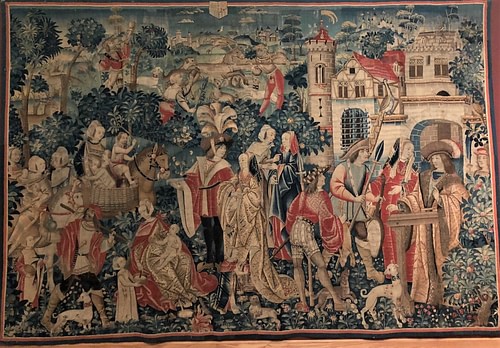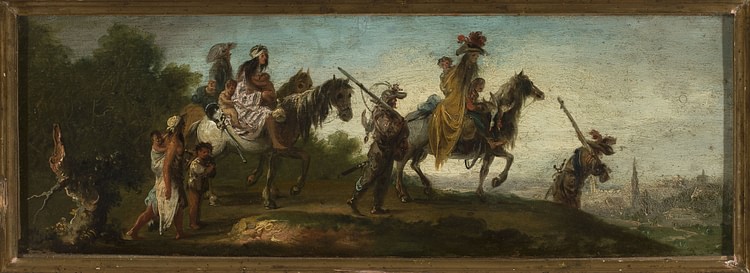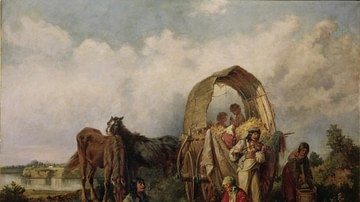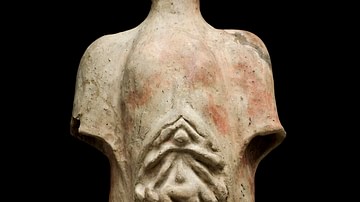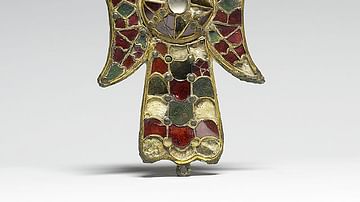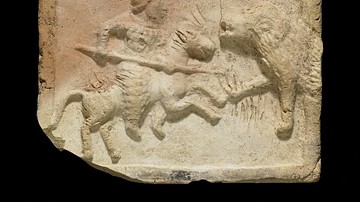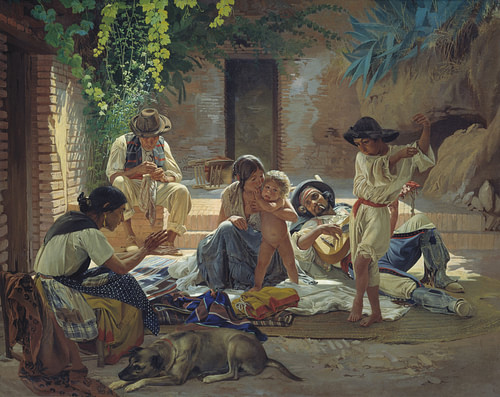
Romani is an umbrella term used to describe a diverse ethnolinguistic group of people with a historical presence in Europe and West Asia. The historically common term 'Gypsy' is based on the myth that they came from Egypt. In reality, the ancestors of the Romani migrated out of India in the 1st millennium CE.
During the European colonization of the New World, the first Romani arrived in the Americas as a result of slavery or deportation by European colonial powers. Romani immigrants began to voluntarily settle in North and South America in the 19th century. In the present, Romani communities are found throughout the world. Romani people share language and certain cultural similarities but encompass a wide range of social, cultural, and ethnic diversity.
Names & Identity
For most of history, there was no universal name for the Romani in their own language; different groups of Romani speakers and their descendants used different names for themselves and each other. The closest thing to an endonym in the Romani language is the word Rom/Romni, meaning a man or woman. In the present day, 'Romani' and 'Roma' are the most widely accepted umbrella terms for groups who speak or historically spoke Romani and have a common origin in the Indian subcontinent.
However, the Romani label is a modern invention intended to make it easier to discuss the overlapping history and experience of these groups and was not used this way prior to the 20th century. For most of history, there was no unified Romani identity or nation. The label is applied by historians to more conveniently refer to a number of communities which shared language and some cultural habits, but it should not be taken to mean that these groups were unified or homogenous. Contrary to the stereotype of Romani keeping themselves separate from society at large, European Romani were intimately connected to their neighbours and possessed a flexible cultural identity.
Different groups of Romani speakers have historically used their own endonyms. 'Roma' is widely used among Romani originating in Central and Eastern Europe. The Finnish Kaale and the Calé of the Iberian peninsula use names derived from kalo (meaning "black" in Romani). Other notable peoples include the Sinti of northwestern Europe, the Manouche of France and Belgium, and the Romanichal found in English-speaking countries. Many Romani clans and subgroups have been known by their historical professions, such as the Kalderash (lit. "coppersmiths").
Several names have been given to the Romani by outsiders, often based on misconceptions about them. The English word 'Gypsy' comes from the myth that the Romani originated in Egypt. Over time, it came to be used broadly for many nomadic or semi-nomadic groups in Eurasia. In the modern day, the term 'Gypsy' is often considered offensive, although it is used by some Romani. Gypsy is often used academically as an umbrella term to include both Romani and other nomadic peoples historically labeled 'Gypsies.'
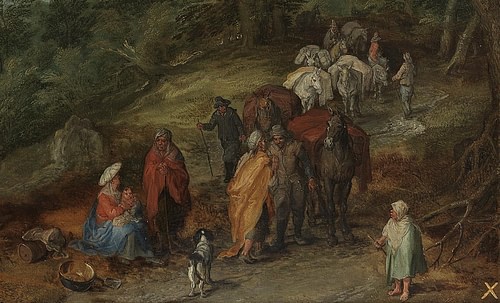
Numerous European languages use words derived from the Greek word Atsingani or Athingani to describe Romani, such as the French Tzigane or Portuguese Cigano. The original Greek likely derives from Athinganoi, the name of a heretical Christian sect in the Byzantine Empire, and may have been applied to the Romani due to their foreign religious practices or association with fortune-telling.
The history of the Romani is intertwined with that of other minority groups, particularly nomadic peoples of Europe and the Middle East. The Lom of Armenia and the Dom found throughout North Africa and the Middle East share commonalities with Romani and likely share an Indian origin. The Romani, Domari, and Lomavren languages are thought to have originated from the same group of Central Indian languages. The term Gypsy has historically also been applied to other European nomadic peoples such as Irish Travellers and the Yenish of Western Europe, who have different origins than the Romani.
Romani Language
The defining feature across Romani communities is the use of Romani, an Indic language with close ties to languages like Sanskrit. It has changed considerably over time due to the wide geographic diaspora of its speakers and because it was transmitted almost exclusively orally until the modern period. Its grammar and vocabulary changed due to contact with the dominant languages of the time, particularly Armenian, Greek, and Persian.
At the same time, cultural mixing on the margins of society led to the inclusion of elements from minority languages in many Romani dialects. Linguists have identified several distinct dialects of Romani, some of which may not be mutually intelligible. Several Para-Romani languages, which combine elements of European and Indo-Aryan languages, have also developed in Europe.
Origins in India
Linguistic studies have revealed that the Proto-Romani language developed in India in the early Middle Ages. The evolution of Proto-Romani through contact with other languages has allowed historians to reconstruct the movements of Romani speakers before historical accounts mention them in any detail.
The exact time of their migration is unknown. Most scholars agree that a loose conglomeration of peoples migrated out of northwestern India in the Middle Ages. It is generally accepted that this must have occurred before c. 1000 CE, because the Romani language had begun to diverge from other Indian languages by this point. This migration probably occurred in several waves, rather than as one large population movement. Despite the popular image of nomadic Romani, several scholars have suggested that the ancestors of the Romani were not originally nomadic.
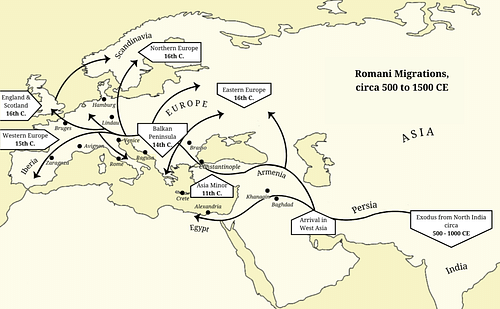
The cause of this mass movement of people is unclear, but a number of migration events out of India could have involved the ancestors of the Romani. In particular, invasions of the Indian subcontinent by Persian and Muslim rulers caused instability in the region. Donald Kenrick theorized that the Romani migration might have been a result of the conquests of the Sassanian king Ardashir I (r. 224-240 CE) in Northern India. Other theories suggest that the conquests of Mahmud of Ghazni (r. 998-1030) or Muhammad Ghori (r. 1173-1206) might have spurred the ancestors of the Romani to leave India.
At this point, this migration might have included members from a variety of castes and tribes. In The Gypsies, Angus Fraser suggests that the Romani were related to the Doms, an Indian caste of migrant musicians. The nomadic Banjara tribe has also been compared to the Romani, due to their lifestyle, although their languages have few similarities. Another less likely theory holds that the Romani descended from Jat and Rajput warriors who were taken captive in the 12th century.
Early Migrations in the Middle East
The ancestors of the Romani soon arrived in West Asia, where some groups split off in separate directions before rejoining each other later on. Some of their communities were fully or partially nomadic, while others lived in permanent settlements. This flexibility allowed them to easily adapt to Central Asia and the Middle East, which was already home to several nomadic and semi-nomadic peoples. However, other communities of Romani were fully sedentary agriculturalists. These proto-Romani migrated westwards and eventually settled in Persia for some time, acquiring a number of loanwords from Farsi.
The Persian name for Romani, Zutt, was used broadly to describe all Indian migrants in the medieval Islamic world, making it difficult to determine when sources are describing proto-Romani. A 9th-century account claimed that the Sassanian king Bahram V (420-438) brought 12,000 Indian musicians to the country who he later compelled to wander as nomads. The story roughly aligns with the Romani's early reputation as musicians and entertainers and was once considered as their origin. While the story is apocryphal, it is likely that an Indian nomadic minority was established in Persia by the 9th century.
During this period, the ancestors of the Romani began to diverge, with some groups heading into Armenia while others remained in Persia. The Romani remained in Armenia for a considerable period of time, such that the Romani language contains heavy Armenian influences.
Arrival in Europe
In the 11th century, widespread conflict in the Mediterranean spurred some Romani to migrate from Armenia into Greece, where they were first recorded by Byzantine chroniclers. From there, they spread into Southern and Eastern Europe, and established communities throughout Byzantine Greece and the Venetian Empire. As some Romani moved further northwest, they were absorbed into the feudal society of what became Bulgaria, Serbia, and Romania. The earliest accounts from the Balkans describe the Romani as skilled labourers and craftsmen. They were commonly associated with occupations such as blacksmithing, cobbling, veterinary medicine and farm labour.
So far the picture we have of Gypsies under both the Ottoman and the Venetian empires suggests that, while they were perceived as different, they were not seen as exceptional. They were fully integrated into their administrative structures, and undertook a wide range of economic activities from metalworking and seasonal agricultural labour to military functions and even petty official roles. (Taylor, 34-35)
The Romani were initially welcomed by local rulers as a source of skilled labour and tax revenue, occupying a social status comparable to serfs. The Ottoman conquests in Central Europe and the Balkans had a profound impact on feudal society. Under direct Ottoman rule, Romani tended to have a greater level of freedom than in principalities which were only nominally under Ottoman control. The treatment of Romani varied considerably, from relative equality in some regions to outright enslavement in the principalities of Wallachia, Transylvania, and Moldavia (modern Romania).
Entry into Western Europe
The first accounts of Romani in Western Europe describe groups of Gypsies who arrived in the 14th century under the direction of leaders identified as counts or dukes. These groups were much more organized than previous migrations and were typically small, numbering between 40 and 200 people. These parties identified themselves as pilgrims to ensure safe passage through the kingdoms of Western Europe. This was likely because they had observed the freedom of movement afforded to pilgrims in the Byzantine Empire. By the beginning of the 15th century, the Romani were present throughout Western and Northern Europe.
During the late medieval period, the origins of the Romani had become obscure even to themselves. There was a misunderstanding that they had originated in Egypt, and they were called 'Egyptians' or 'Gypsies' by medieval Europeans. A myth proliferated that the Gypsies had been exiled from Egypt for a temporary period as penitence for renouncing Christianity in the past. Some Romani leaders encouraged these stories and further embellished them, claiming to have been sent into exile by their king or even the Pope himself.
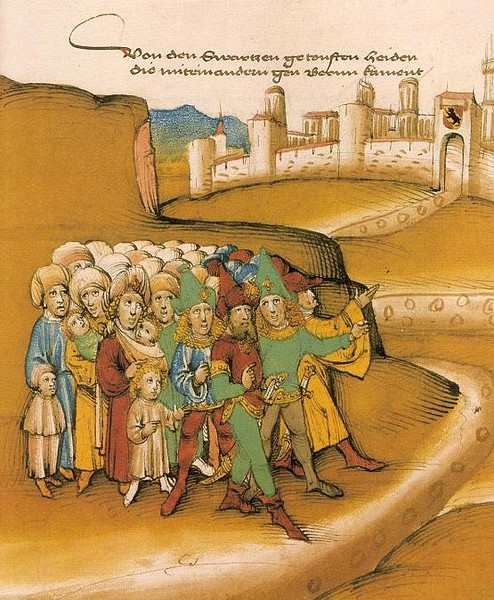
Late medieval European accounts often focus on the foreign appearance and cultural practices of the Romani. The heavy bias of these accounts makes it difficult to construct an accurate picture of what life was like for Romani in medieval Europe. Unlike the mostly sedentary communities in Eastern Europe and the Middle East, many Romani communities in Western Europe led an itinerant lifestyle, travelling regularly to ply their trades and making camp in open fields near settlements.
This nomadism may have been necessitated by the economic structure of Western Europe, which was less accommodating towards outsiders. Most crafts were regulated by medieval guilds, and there were fewer opportunities for seasonal agricultural labour. The pressure to seek out economic opportunities and avoid persecution likely forced Romani in Western Europe to adopt a peripatetic lifestyle, unlike their Eastern and Central European counterparts.
Persecution in Europe
Romani in medieval and early modern Europe were often subject to racism and persecution. Despite the Romani in medieval Western Europe being uniformly Christian, they were frequently described as heathens in contemporary accounts. Like many other minority groups in medieval Europe, they were treated as outsiders and falsely accused of acting as spies for foreign enemies.
Historian Geraldine Heng notes similarities between the treatment of Romani and Jews, both of whom were poorly understood in medieval Europe. The perception of Jews and Romani as secretive or insular contributed to negative sentiments and distrust. Because of their marginalization, they were often made scapegoats for societal issues such as plagues and crime. Many Western European rulers issued edicts banning Romani under pain of imprisonment or death. These laws did not completely uproot the Romani presence in Europe but did force Romani to travel in even smaller groups to avoid persecution.
For the next 200 years and more – from the mid-sixteenth to the latter part of the eighteenth century – there is a depressing uniformity about the response of most European powers to the presence of Gypsies. They continued to be viewed as criminals simply because of their position in society and, on top of that, the special racial prejudices remained, together with religious hostility towards what was seen as their heathenish practices and sorcery. (Fraser, 129)
These attitudes persisted into the early modern period and contributed to the criminalization of Romani and other minority communities. In the 17th and 18th centuries, European governments increased their attempts to forcibly assimilate minority cultural expression through strategies such as anti-vagrancy laws which targeted travelling communities and laws restricting the use of minority languages like Romani.
In the Americas & Australia
Romani were first brought to the Americas and Australia through colonialism. During the European colonization of the Americas, Romani prisoners, slaves, and indentured servants arrived in North and South America. Beginning in 1538, Romani prisoners in Portugal were deported to the colonies of the Portuguese Empire and subjected to forced labor. The descendants of prisoners sent to Portuguese Brazil began the Romani community in Brazil, which is home to the second-largest population of Romani in the world after the United States.
From the 17th century onwards Romani from the Kingdom of England were also sent to overseas colonies in North America, and later Australia. English and Welsh Romanichal began voluntarily emigrating to the United States and Australia in the early 19th century, seeking new opportunities and freedom from discrimination. After the abolition of slavery in Romania, many formerly enslaved Roma emigrated to countries such as the United States, Brazil, and Australia.
Historiography & Romani Studies
During the Enlightenment, prejudice towards Romani became somewhat lessened, and European scholars became curious about the previously disregarded historical and linguistic heritage of the Romani. The first systematic attempts to study the Romani language were made in the 18th century, and the first collections of Romani folklore were published in the 19th century. This eventually developed into the field of Gypsiology (now called Romani studies). While these early scholars made valuable contributions to history and linguistics, their work often perpetuated stereotypes of noble savages and free-spirited nomads who preserved a more primitive and pure way of life than other Europeans. These stereotypes, although not malicious, were rooted in ignorance.
The rise of nationalism and fascism in 20th-century Europe led to violence and genocides, which resulted in the destruction of a significant portion of Europe's Romani population. These events made it a priority for European Romani intellectuals to establish an ethnic and national identity that would allow them to collectively advocate for themselves in the socio-political framework of modern Europe. This intellectual framework has helped to shape modern Romani historiography, which tends to focus on commonalities between Romani communities across time and geography.
